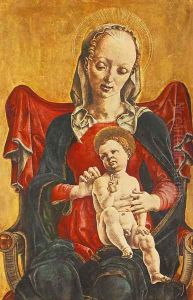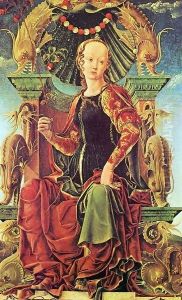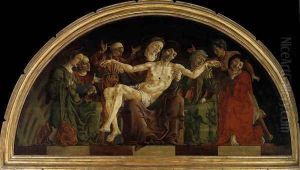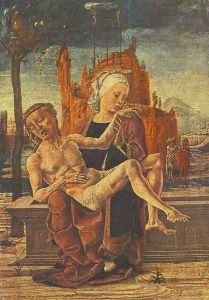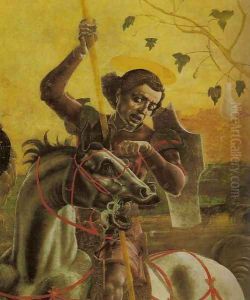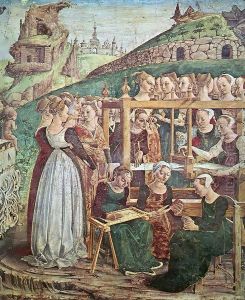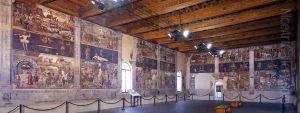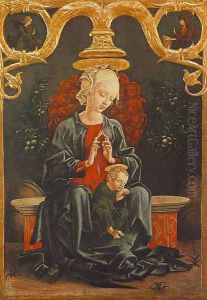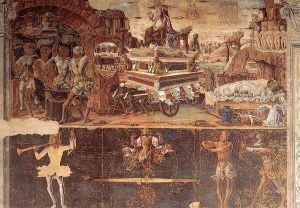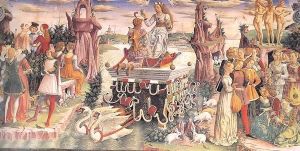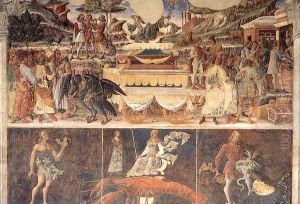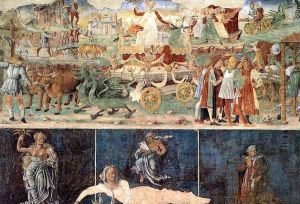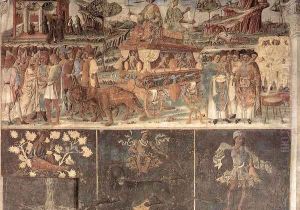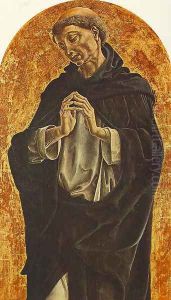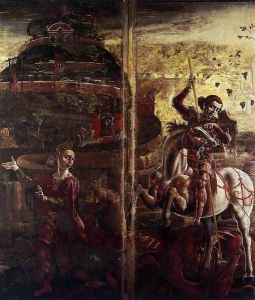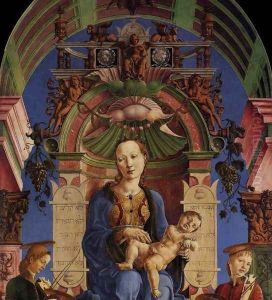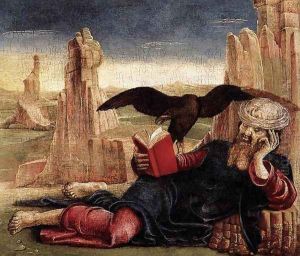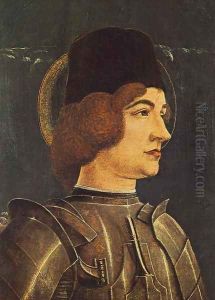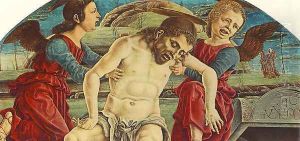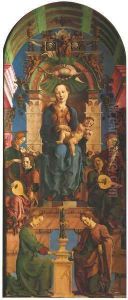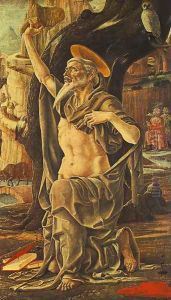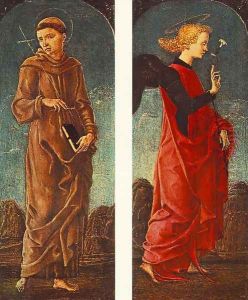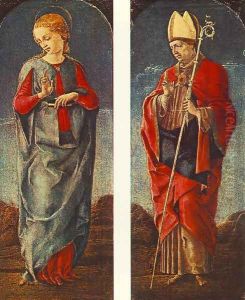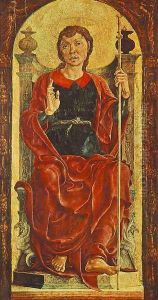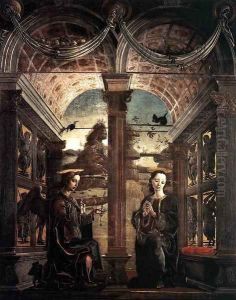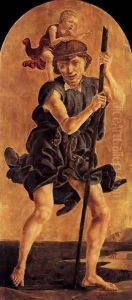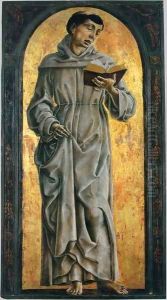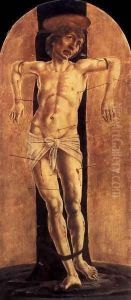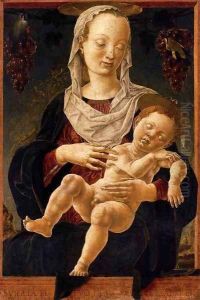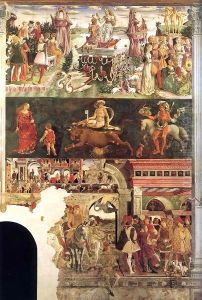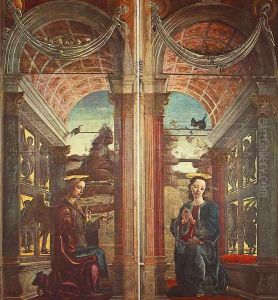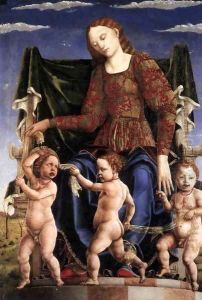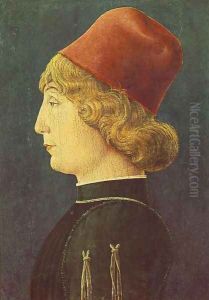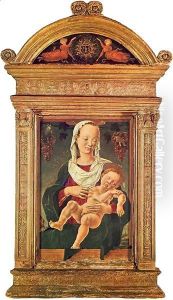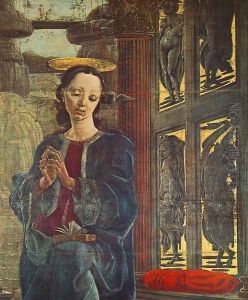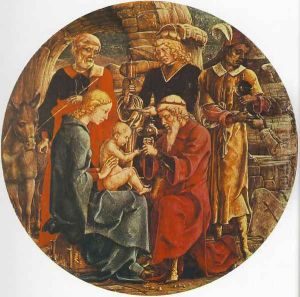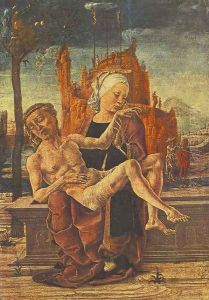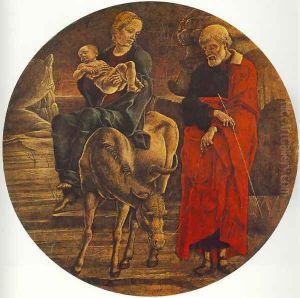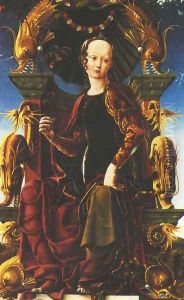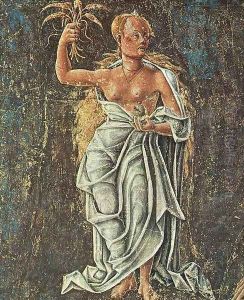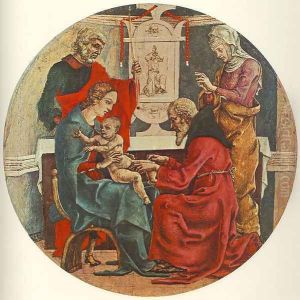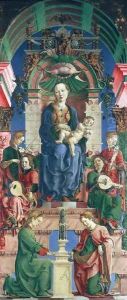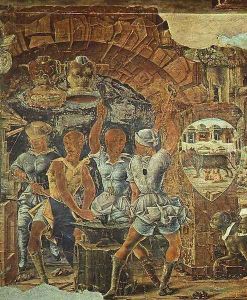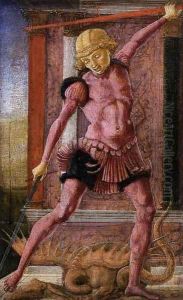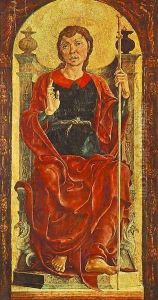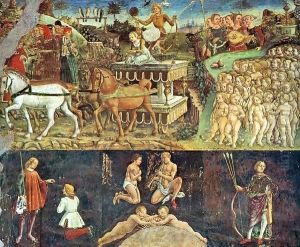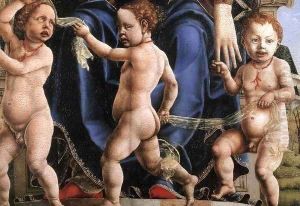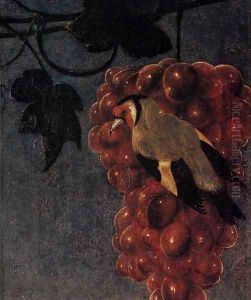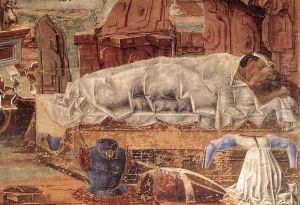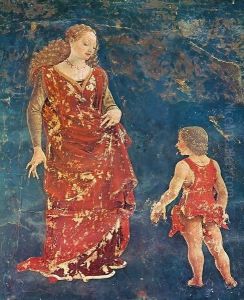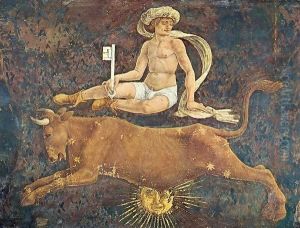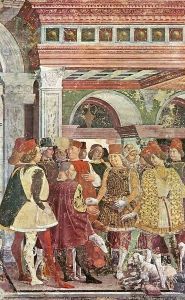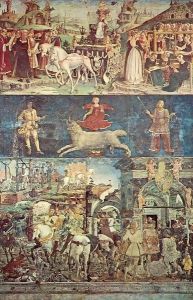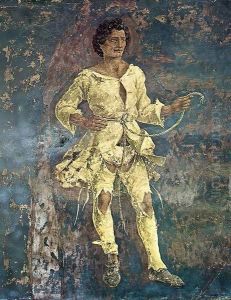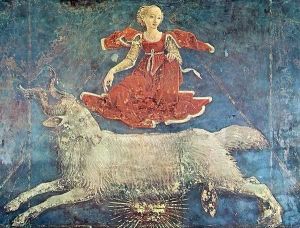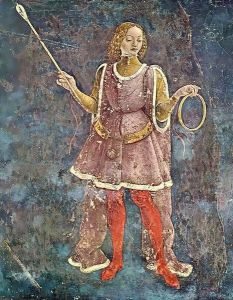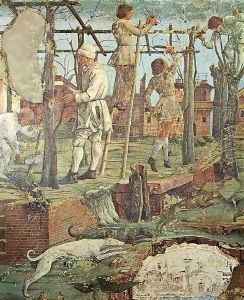Cosme Tura Paintings
Cosme Tura, also known as Cosimo di Domenico di Bonaventura, was an Italian painter, one of the early Renaissance artists and a key figure in the school of Ferrara. Born around 1430 in Ferrara, Italy, Tura's early life is not well-documented, but he is believed to have been trained in the Ferrarese workshop of Francesco del Cossa. His work is characterized by its highly personal style, with elongated figures, meticulous detail, and often stark, even surreal, landscapes. Tura's art reflects the influence of both the International Gothic style and the burgeoning Renaissance interest in perspective and the human form.
Tura became the court painter to the Este family in Ferrara in 1458, a position that allowed him to work on a variety of projects, including altarpieces, frescoes, and portraits. One of his most significant works is the series of frescoes in the Palazzo Schifanoia, which were part of a larger cycle depicting the months of the year, showcasing both allegorical and mythological scenes. The frescoes are noted for their vibrant use of color and complex iconography.
Another important work by Tura is the organ shutters for the Ferrara Cathedral, featuring the Annunciation and St. George and the Dragon. These panels display Tura's skill in portraying dramatic narratives and his unique rendering of anatomical details.
Cosme Tura's influence on the Ferrarese school of painting was significant, and his works are considered to be among the most original of the Italian Renaissance. His distinctive style was a precursor to the mannerist movement that would later emerge in Italian art. Despite his importance, Tura's work was somewhat overshadowed by his contemporaries in Florence and Venice, and only in recent years has his contribution to Renaissance art been more fully recognized.
Tura's death in 1495 marked the end of a career that had a lasting impact on the development of Renaissance art in northern Italy, especially in the region of Ferrara. His work lives on as a testament to the innovative spirit of the time, blending gothic traditions with the new humanist ideas that were sweeping through Italy during the 15th century.
